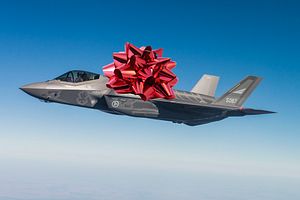Earlier this week, Benjamin David Baker gave a good account of the stealth fighter projects in the Asia-Pacific, including in China, South Korea, Japan, and India. But not all of the major defense players in the region can (or want to) develop their own fighters. Big spenders like Malaysia, Australia, Canada, Indonesia, and others may seek fifth generation fighters in the future. Where are they planning to buy?
How soon would you like your fighter?
Are you planning to start a war soon, or do you feel like you need to deter an aggressor in the short-term? Unfortunately, almost all of the fifth generation fighter projects have suffered from long delays and serious cost overruns. Only the F-22 Raptor is currently active. The F-35 is moving toward real operational capability, and the J-20 and PAK FA will probably get there in a few years. The J-31 is anyone’s guess, but will probably come next. The Indian, Japanese, and Korean projects are entirely notional at this point, but 2025 might represent an optimistic assessment.
So, if war is in your near-term plans, think the F-35. If not, you have the luxury of some time to make a decision.
Are you friends with China?
China has never demonstrated a lot of discrimination with respect to arms transfers. However, it is deeply unlikely that the People’s Republic would be willing to sell stealth fighters to its potential enemies in the South China Sea. This strikes Vietnam and the Philippines right off the list. Fortunately for discerning customers, however, Beijing doesn’t yet have the diplomatic heft to prevent sales from other countries, including India and Russia. The F-35 or the PAK FA might fit the bill for countries on the outs with China.
Are you friends with America?
Questions about its overall effectiveness aside, the F-35 contains a number of extremely sensitive U.S. technologies. The recent decision to veto the transfer of four of these technologies to South Korea demonstrates just how closely the United States guards its most advanced assets. This suggests that the United States will approach export with a certain degree of care. It probably means that while Australia, Japan, Canada, and South Korea can count on the F-35’s availability, anyone else would be a hard sell. This may even include India, which has enduring disputes over technology with the United States.
Are you committed to your fighter actually existing at some point in the future?
Many countries seek a fighter that may, at some point, exist. Other countries are less particular. The picky ones, however, may want to avoid such speculative projects as the KF-X and the ATD-X, which at this point serve primarily as the makework projects of the Korean and Japanese aerospace industries.
How important is cost?
We don’t yet have good price data on the fifth generation fighter projects, and the complications associated with technology transfer and other elements of a deal make it hard to arrive at exact figures in any case. No matter what, the price for a stealth fighter will be high, both in terms of initial purchase and in long-term maintenance.
The flyaway cost for the F-35A is supposed to settle between $100-$130 million by the end of the decade. Estimates range widely for the PAK FA, but it may come in at around $100 million. The J-31 will probably be a bit less, perhaps $75 million. In order to maintain their stealth characteristics (and their sophisticated electronics) all of these jets will require substantial maintenance and lifecycle upgrades.
Do you want to bomb things, or shoot things down?
The existing stealth fighters concentrate either on the strike or the air superiority missions, with the F-22 and PAK FA specializing in the latter, and the F-35 and J-20 concentrating on the former. The F-22 is right out, but assuming everything comes together, the PAK FA looks like a wicked air-to-air platform that could give any enemy strike package a very bad day.
The F-35 can do air-to-air combat, sort of, but does its best work in conjunction with a wide array of ancillary assets that may not be available to every export customer. The J-20 is thought of mainly as a strike fighter, and the J-31 will probably amount to a second-rate version of the F-35. Any of these will do if the focus is on strike rather than air supremacy.

































